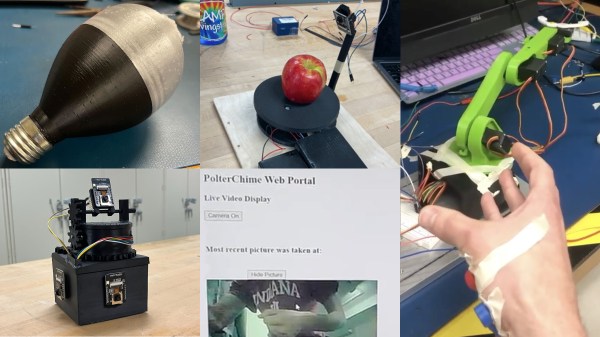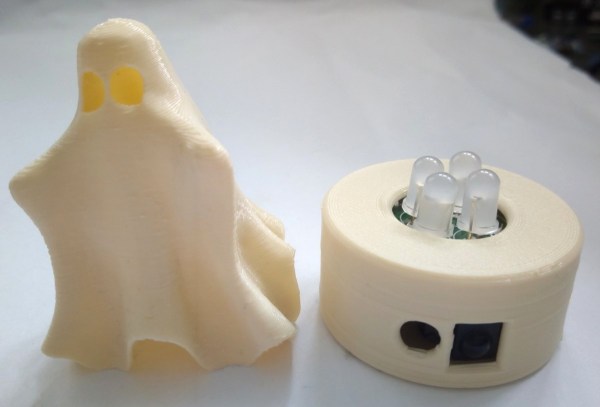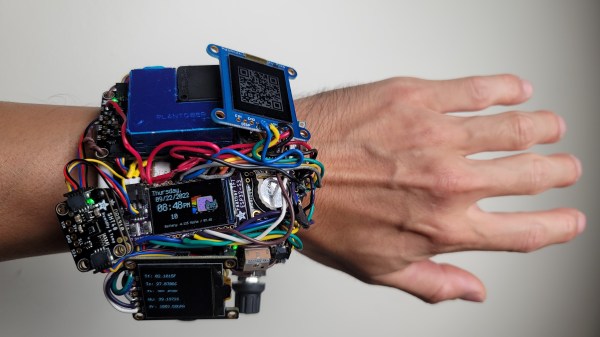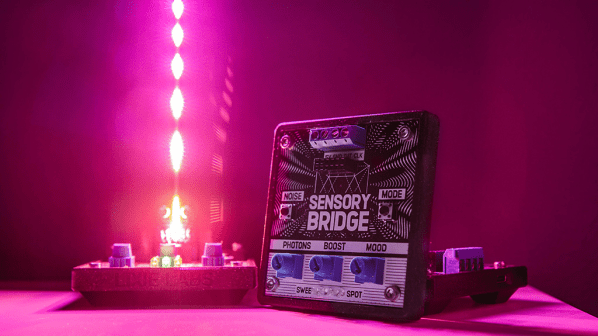Northwestern University’s Embedded Electronics Class delivered a bumper crop of ESP-32 projects this year. The student teams recorded their progress on hackaday.io with project descriptions, logs, BOMs, diagrams, photos, and videos to share with other makers. While all utilized the web connection that the ESP32 offers some teams chose to use ESP32 Cams to incorporate photos, video, and computer vision. We love the variety of projects the teams created, some customized versions of consumer products and others new types of smart-devices. Continue reading “ESP32 Projects From Northwestern University’s Embedded Electronics Class”
Weird Energy Storage Solutions Could Help The Grid Go Renewable
We’re all familiar with batteries. Whether we’re talking about disposable AAs in the TV remote, or giant facilities full of rechargeable cells to store power for the grid, they’re a part of our daily lives and well understood.
However, new technologies for storing energy are on the horizon for grid storage purposes, and they’re very different from the regular batteries we’re used to. These technologies are key to making the most out of renewable energy sources like solar and wind power that aren’t available all the time. Let’s take a look at some of these ideas, and how they radically change what we think of as a “battery.”
Continue reading “Weird Energy Storage Solutions Could Help The Grid Go Renewable”
A Hacker Walks Into A Trade Show: Electronica 2022
Last week, the world’s largest electronics trade fair took place in Munich, so I had to attend. Electronica is so big that it happens only once every two years and fills up 14 airplane hangars. As the fairly generic name suggests, it covers anything and everything having to do with electronics. From the producers of your favorite MLCC capacitors to the firms that deliver them to your doorstep, from suppliers of ASIC test equipment to the little shop that’ll custom wind toroids for you, that’s a pretty wide scope. Walking around, I saw tomorrow’s technology today from the big players, but I also picked up some ideas that would be useful for the home gamer.
 When I first walked in, for instance, I ran into the Elantas booth. They’re a company that makes flexible insulation and specialty industrial coatings. But what caught my eye was a thermoformed plastic sheet with circuit traces on it. To manufacture them, they cut out copper foil, glue it to a flat plastic sheet with a glue that has a little give, and then put it all together into a vacuum former. The result is a 3D circuit and organically formed substrate in one shot. Very cool, and none of the tech for doing that is outside of the reach of the determined hacker.
When I first walked in, for instance, I ran into the Elantas booth. They’re a company that makes flexible insulation and specialty industrial coatings. But what caught my eye was a thermoformed plastic sheet with circuit traces on it. To manufacture them, they cut out copper foil, glue it to a flat plastic sheet with a glue that has a little give, and then put it all together into a vacuum former. The result is a 3D circuit and organically formed substrate in one shot. Very cool, and none of the tech for doing that is outside of the reach of the determined hacker.
The Cool Stuff
All of the stands, big or small, try to lure you in with some gimmick. The big fish, firms with deep pockets, put up huge signs and open bars, and are staffed by no shortage of salespeople in suits. The little fish, on the other hand, have to resort to showing you the cool stuff that they do, and it’s more often the application engineers sitting there, ready to talk tech. You can guess which I found more interesting.
For instance when I walked up to an obviously DIY popcorn popper that was also showing 5000 FPS footage of kernels in mid-pop, I had to ask. The company in question was a small UK outfit that made custom programmable power supplies and digital acquisition gear that interfaced with it. You could plug in their box to some temperature probes, fire off the high-speed video camera, and control the heating and cooling profile without writing any code. Very sweet. Continue reading “A Hacker Walks Into A Trade Show: Electronica 2022”
Gutting And Upgrading Laser “Chiller” With No Chill
Getting a cheap CO2 laser cutter is great for your workshop needs, and while you might get a weaker-than-declared laser tube, it’s still going to cut whatever you need to be cut. That might not be the case for the cooling equipment you’re getting alongside it, however, as [RealTimeKodi] shows in a post-project blogpost. They bought a CX3000 “chiller” and found out it had no chiller components (Nitter), only equipped with a radiator, a fan, and a pump.
Having your laser tube water be somewhat close to ambient temperature is something you can already achieve with an aquarium pump and a bucket of water — and it isn’t worth paying $100 for. Left with the sunk cost and an unfulfilled need for a proper chiller, [RealTimeKodi] started looking for paths to take – first one was using TEC elements. The upgrade process was fun, but the result was subpar, as the elements gobbled power with hardly any useful output to show for it.
[RealTimeKodi] didn’t give up, and eventually found an old water fountain chiller with chiller-like components inside, sold for $200. They could’ve used the water fountain as-is, but a few design issues and thirst for adventure got in the way, indisputably forcing them to stuff the fountain’s guts into the CX3000’s case.
Buying a laser cutter can sometimes feel like buying a 3D printer a decade ago — you get a K40, learn to use it, add the missing safety features, mod in autofocus, upgrade the control board, expand the work surface… That said, our experience shows that you don’t need any of those if A4-sized 3 mm wood cutting suit you, but a proper chiller is still worth its weight in gold-plated acrylic.
Continue reading “Gutting And Upgrading Laser “Chiller” With No Chill”
A Cold Light To Warm Your Heart
Halloween is coming fast and what better way to add to your Halloween ornamentation than [Wagiminator]’s cute NeoCandle tea light simulator.
[Wagiminator] has modified a 3D printed ghost along with extending [Mark Sherman]’s light simulation code to create a cute light that’s perfect for the holiday season. The NeoCandle uses an ATtiny85 chip to power four WS2812 NeoPixel jelly bean LEDs. The device has an infrared (IR) receiver to be able to control it from a remote that speaks the NEC protocol. There is a light sensor that allows the unit to dim when it detects ambient light and the whole unit is powered off of a micro-USB connection.
The ATtiny85 have limited program flash and [Wagiminator] packs in a lot of functionality in such a small package, squeezing in a bit-banging NeoPixel driver in only 18 bytes of flash that can push out a transfer rate 762 kpbs to update the LEDs. The pseudo-random number uses a Galois linear feedback shift register and comes in at 86 bytes of flash, with the IR receiver implementation code being the largest using 234 bytes of flash. The ATtiny85 itself has 8 KB of flash memory so maybe it’s possible to push [Waginminator]’s code to even more restrictive Atmel devices in the ATtiny family.
With microcontrollers and LEDs becoming so cheap and ubiquitous, making realistic flames with them is becoming accessible, as we’ve seen with previous projects on electronic candles.
2022 Cyberdeck Contest: IP00-Minus, A Daring Wearable
[Rob]’s IP00-Minus watch stands out on the Cyberdeck Contest project list page; it’s clear he decided to go a different path than most other hackers, and we can certainly see the advantages. For example, if there’s no case, there’s no need to redesign it each time you want to add a module — and [Rob] has added many, many modules to this watch.
Picking between regular LCD, memory LCD, and OLED displays can be a tricky decision to make when planning out your gadget, so he just added all three. The CircuitPython firmware initially attempted to resist the trio, but was eventually defeated through patching. Jokes aside, we can almost feel the joy that [Rob] must have felt after having put this watch on for the first time, and this project has some serious creative potential for a hacker.
 [Rob] has been focusing on day-to-day usability first and foremost, with pleasantly clicky encoders, impeccable performance of its watch duty, unparalleled expandability, and comfortable wrist fit — it provides a feeling no commercial wearable could bring.
[Rob] has been focusing on day-to-day usability first and foremost, with pleasantly clicky encoders, impeccable performance of its watch duty, unparalleled expandability, and comfortable wrist fit — it provides a feeling no commercial wearable could bring.
Out of the myriad of sensors, the air quality sensor has been the most useful so far, letting him know when to open a window or leave a particularly crowded place. The ESP32-S3 powered watch has been quite a playground for [Rob]’s software experiments, and given the sheer variety of hardware attached, we’re sure it will bring unexpected synergy-driven ideas. Plus, it’s no doubt a great conversation starter in nerd and non-nerd circles alike.
Good things happen when you give hackers a wrist-worn watch full of sensors, whether it’s a particularly impressive event badge, a modified firmware for an open source smartwatch, or a custom piece that pushes the envelope of DIY hardware.
The Sensory Bridge Is Your Path To A Desktop Rave
[Lixie Labs] are no strangers to creating many projects with LEDs or other displays. Now they’ve created a low latency music visualizer, called the Sensory Bridge, that creates gorgeous light shows from music.
The Sensory Bridge has the ability to update up to 128 RGB LEDs at 60 fps. The unit has an on-board MEMS microphone that picks up ambient music to produce the light show. The chip is an ESP32-S2 that does Fast Fourier Transform trickery to allow for real-time updates to the RGB array. The LED terminal supports the common WS2812B LED pinouts (5 V, GND, DATA). The Sensory Bridge also has an “accessory port” that can be used for hardware extensions, such as a base for their LED “Mini Mast”, a long RGB array PCB strip.
The unit is powered by a 5 V 2 A USB-C connector. Different knobs on the device adjust the brightness, microphone sensitivity and reactivity of the LED strip. One of the nicer features is its “noise calibration” that can record ambient sound and subtract off the background noise frequency components to give a cleaner music signal. The Sensory Bridge is still new and it looks like some of the features are yet to come, like WiFi communication, accessory port upgrades and 3.5 mm audio input to bypass the on-board microphone.
The stated goals of the Sensory Bridge are to provide an open, powerful and flexible platform. This can be seen with their commitment to releasing the project as open source hardware, providing firmware, PCB design files and even the case STLs under a libre/free license. Audio spectrum analyzers are a favorite of ours and we’ve seen many different iterations ranging from ones using Raspberry Pis to others use ESP32s.
Video after the break!
Continue reading “The Sensory Bridge Is Your Path To A Desktop Rave”



















